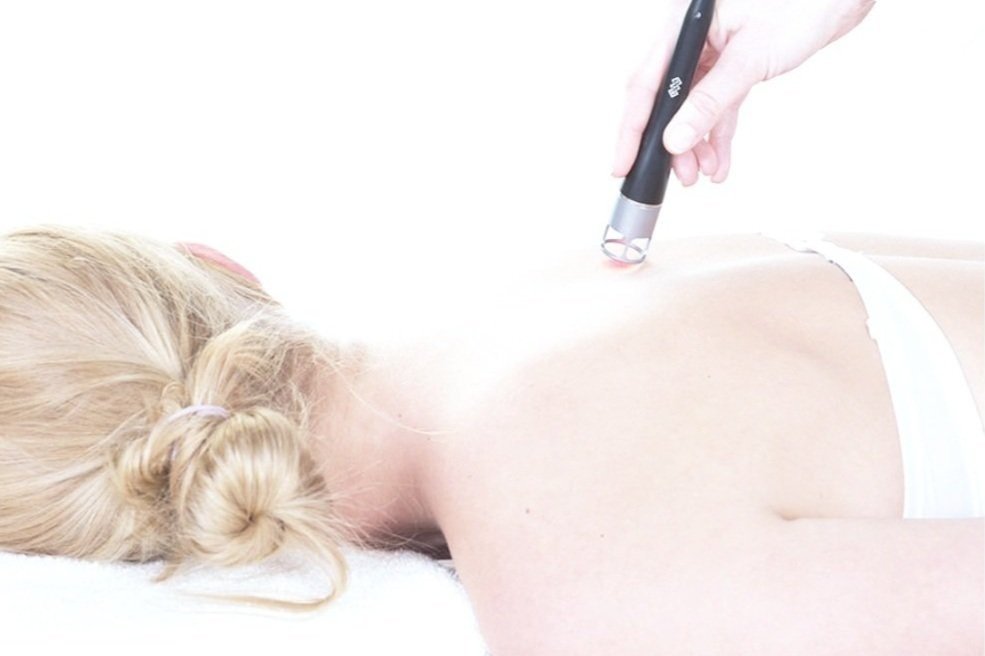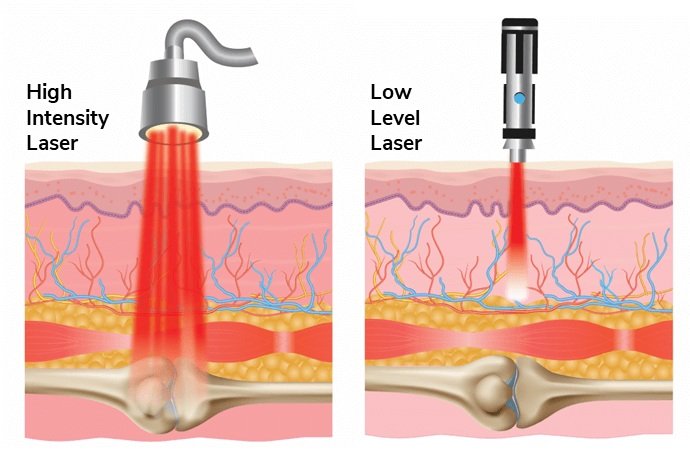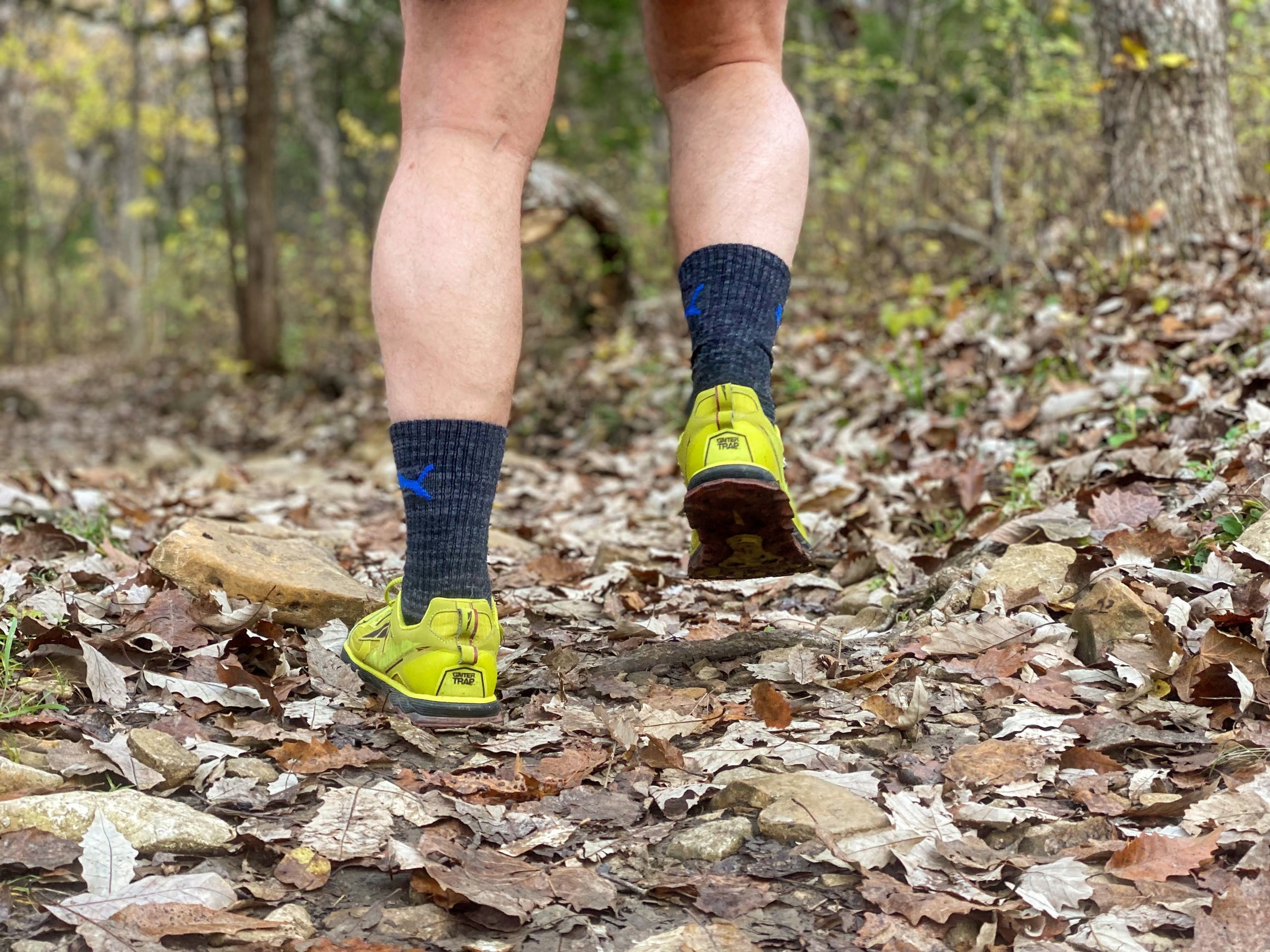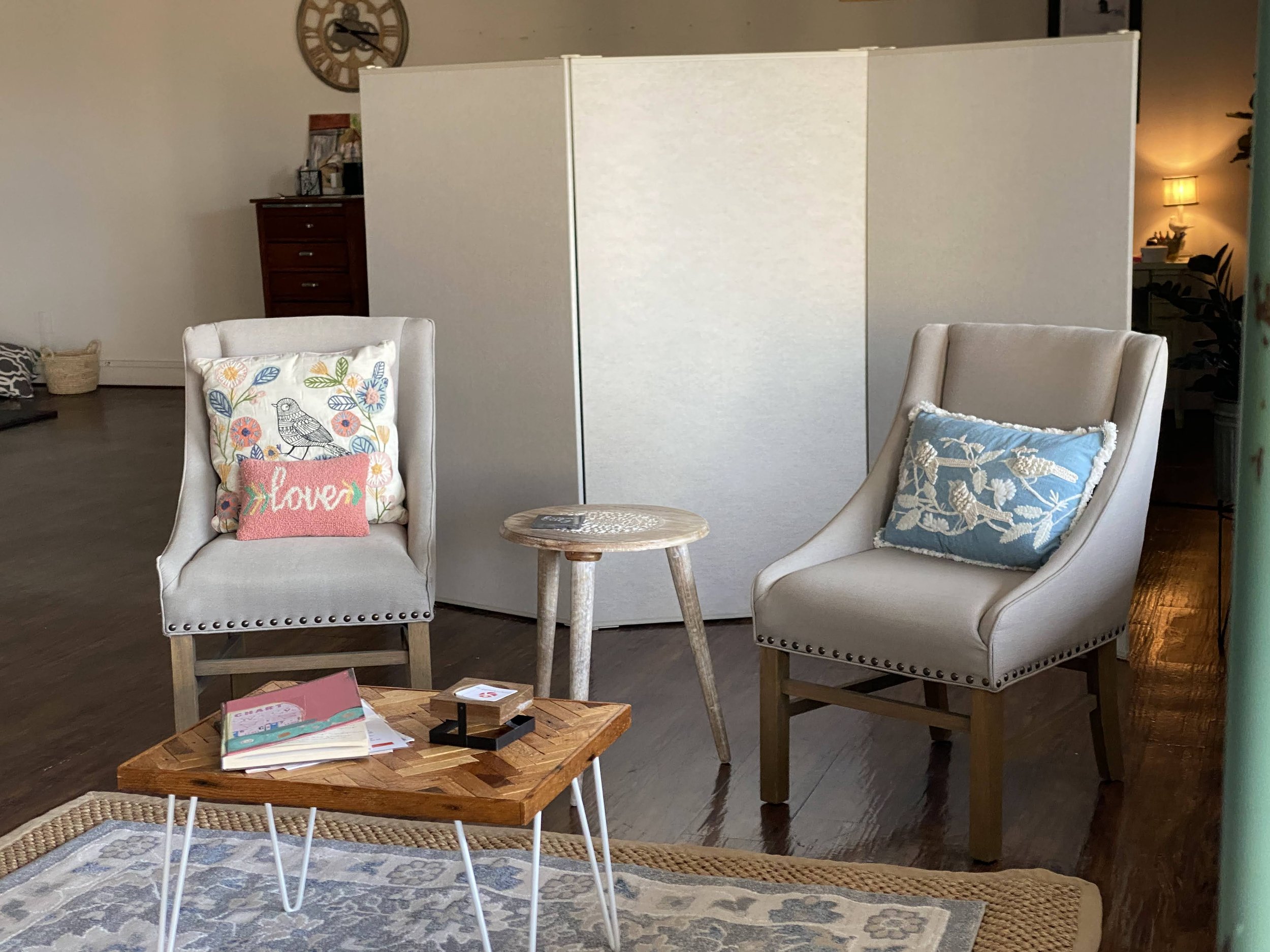High-Intensity Laser Therapy - FAQs
image from high-intensity-laser.co.uk
What is HILT?
HILT is a non-invasive and painless treatment method. It stimulates cells, including pain receptors and the immune system, and can increase blood flow and decrease pain. It promotes the repair of damaged tissues of the musculoskeletal system and nerves, which can help with neurological regeneration. Stay tuned for Coach Amy’s article: The Science Behind HILT - How Does It Work?
What conditions does HILT treat?
HILT is a treatment, not a cure; it is supplemental to other physical therapy methods such as manual treatment, dry needling, biomechanics, and functional exercises. It is not a stand-alone treatment. It helps in the treatment of:
Neuropathy and neuromas, nerve entrapment, carpal tunnel syndrome
Fascitis
Musculoskeletal injuries (tears, bursitis, fractures, sprains/strains)
Tendonitis/tendonosis
Back and neck pain (herniated disc, facet joint syndrome)
Joint pain
Frozen shoulder
TMJD
Rotator cuff injuries/impingement syndromes
Pain syndromes (fibromyalgia)
Headaches (tension, cervicogenic, migraines)
Arthritis (osteoarthritis and rheumatoid arthritis)
This list is not all-inclusive. Ask Coach Amy if HILT will help with your specific condition.
How many treatment sessions will I need?
The number of sessions depends on the nature and duration of your condition and other factors. Some acute conditions will respond in 4 or fewer sessions, whereas chronic conditions may take several more treatments. You can expect some progress and change within 1-4 sessions. When a patient does not demonstrate progress after 3-4 treatments of HILT, Coach Amy re-evaluates the diagnosis and treatment protocol.
Some chronic conditions require ongoing care, e.g., 1/mo—tune-up sessions to sustain pain relief and functionality. Coach Amy will discuss your personalized plan of care with you.
How much does treatment cost?
The quotes below are effective 3/2024. Prices are subject to change.
Self-Pay Patients
Coach Amy can incorporate HILT into a regular appointment. The total price of Self-Pay with HILT add-on is $180.00.
Blue KC Patients
BCBS does not cover HILT. Coach Amy can incorporate it into a regular PT appointment at an additional cost of $70.00. You are also responsible for the copay or coinsurance due for covered services provided during the treatment session.
For more information on the cost of physical therapy, see FAQ: How much does physical therapy cost?
Can I book a laser-only treatment?
15-minute follow-up HILT costs $80.00 and is for established patients only on a case-by-case basis. These appointments require an initial evaluation within the treatment year and 1/mo. 40 min—appointments for supplemental treatments and reassessment. Please email Coach Amy before booking if you are unsure.
What does HILT feel like?
Most patients describe it as a very soothing, warm sensation. Because it is a high-powered laser, your skin will get warm during the treatment. Many patients feel a significant reduction in pain on the first visit. Occasionally, patients will feel slightly more pain immediately after the treatment but feel much better the next day.
How will I feel after the treatment?
You may feel pain relief after the first treatment. For some patients, it takes a while longer. Most patients report feeling very relaxed or even tired.
I feel a lot better- but Coach Amy prescribed more than one session of HILT. What should I do?
If you experience a reduction in pain, remember that pain reduction is just one goal. HILT boosts cell energy, so they repair and regenerate new tissues, which takes time and successive treatment. HILT is cumulative and requires dosing similar to a round of medication. See above: "How many treatment sessions do I need?"
Do I need to take special precautions after HILT?
One effect of HILT is vasodilation, which increases blood flow and lymph drainage; this helps reduce inflammation but can cause soreness. You can soak in EPSOM salts, moist heat, or apply soothing cream to the area.
Why must I wear safety glasses during the treatment?
HILT is a high-powered laser. The lens of your eye can focus class IV laser light and potentially cause damage to your retina. The safety glasses block out the damaging wavelengths of light.
Is HILT safe?
HILT is safe if administered by a trained physical therapist. Coach Amy is trained and certified to use a safe and effective FDA-approved Therapeutic Class IV laser to stimulate cellular repair and decrease pain.
High-intensity laser therapy (HILT) emits powerful beams to quickly provide a desired high amount of multi-directional energy to deep tissues. The laser is applied in long smooth strokes for several minutes to provide adequate dosage levels to structures below skin level, like muscles and nerves.
While the therapeutic laser is a class IV laser, it is not a surgical laser. The therapeutic laser disperses the energy in a broad area for healing purposes, unlike a surgical laser which distributes the power in a concentrated area to cut, coagulate, and evaporate tissue.
Are there any risks to HILT?
HILT is a valuable treatment for musculoskeletal pain and injury; however, there are possible complications like any treatment. While these complications are rare, it is essential to consider them before consenting to therapeutic laser treatment. You must sign a consent form before receiving HILT.
Risks may include mild bruising, temporary increase in pain during the application process and the following day, temporary dizziness, and reaction with photosensitizing drugs (certain antibiotics, for example). Please check with your doctor or pharmacist if you are unsure whether you take a photosensitive medication. Coach Amy maintains a list at the clinic.
Are there contraindications to HILT?
Many of the few contraindications for therapeutic lasers are relative rather than absolute. Caution and consideration for:
pregnancy
history of seizures
growth plates
history of cancer
photosensitizing drugs
radiation therapy
A skilled clinician, together with careful patient selection, should minimize risks.
How do I prepare for a HILT session?
High-powered lasers react with jewelry, dark hair, and lotions. Coach Amy prepares the treatment area to ensure your safety, but you can help by preparing for your session.
Remove jewelry and any reflective clothing.
Wear comfortable, loose-fitting clothing around the treatment area. Laser is applied directly to the skin.
Fill out your consent forms before your first treatment session.
Secure long hair in a hair band if the treatment area is the face or neck.
Do not apply lotions or creams before treatment.
Make sure the treatment area is clean.
I have more questions about HILT.
If you have more questions about HILT, please ask Coach Amy at your next appointment.
Introducing High-Intensity Laser Therapy at CoachAmyPT
image from inmotionpainsolutions.com
Drum roll, please!
After a thorough dive into the efficacy of High-Intensity Laser Therapy (HILT), we are excited to announce that we are adding it to the services provided at CoachAmyPT.
Many of us like to consult Google, friends, and family for medical advice, experiences, and information. Sometimes those sources are helpful; other times, we can fall into a rabbit hole of well-intentioned but incorrect info. We want to ensure your decisions regarding HILT are based on fact.
So, let us get started!
What is HILT, and what isn't?
HILT is a non-invasive and painless treatment method. It stimulates cells, including pain receptors and the immune system, and can increase blood flow and decrease pain. It promotes the repair of damaged tissues of the musculoskeletal system and nerves, which can help with neurological regeneration. Stay tuned for an article, The Science Behind HILT - coming soon.
High-Intensity Laser Therapy (HILT) is high-powered and uses a class IV laser, not LED light therapy or cold laser. It is not low-power laser therapy (class IIIb).
The main difference between HILT and low-power laser therapy is that the more powerful beams (power >500 mW) penetrate deeper, bringing a desired high amount of multi-directional energy to deep tissues quickly.
What this means for you:
HILT is more effective and produces results that other light therapies do not.
HILT requires fewer doses than other light therapies and, therefore, less accumulated out-of-pocket expense. e.g., 5-6 treatments v.s. 20 treatments
HILT requires less treatment time: 5-8 min instead of 20-30 min; therefore, the practitioner can employ other complementary treatment methods during the same physical therapy visit.
While the therapeutic laser is a class IV laser, it is not a surgical laser. The therapeutic laser disperses the energy in a broad area for healing purposes, unlike a surgical laser which distributes the power in a concentrated area to cut, coagulate, and evaporate tissue.
High-intensity Laser Therapy is not a stand-alone treatment. It supplements and enhances other physical therapy methods like manual therapy, functional exercises, and addressing the biomechanical cause of an injury.
If Coach Amy determines you may benefit from HILT, she can incorporate it into a regular Self-Pay or BCBS Insurance Physical Therapy appointment at an additional cost.
Coming Soon
Coach Amy is writing several articles to help you learn more about HILT.
Conditions HILT Helps Treat.
HILT helps treat conditions from head to toe, including pain syndromes, nerve and joint problems, and muscle and tendon damage. In this Article, Coach Amy lays it all out.
The Science Behind HILT - How does it work?
Coach Amy takes you back to high school science and explains how HILT works. Don't worry; you will understand it even if you didn’t pass high school science.
Is HILT safe?
Coach Amy is trained and certified to use a safe, effective, FDA-approved Therapeutic Class IV laser. This article outlines the risks, precautions, and contraindications of HILT.
HILT FAQs.
We know you have many questions! This article covers everything from what to expect during treatment, how many sessions you may need, how to prepare, and more.
To receive these articles, subscribe to Coach Amy Says blog. See the button below.
An Interview with Coach Amy
“Once in a while, after a treatment session, I will ask a patient, “how much do I owe you for today?” ”
Coach Amy answers common patient queries about her path into the wide world of healthcare and the physical therapy profession.
Did you always plan to work in healthcare?
No, I was a journalism major, and as a sophomore in college, I realized that career would not fulfill my desire to help people - I didn't feel it would be rewarding for me. So I took a 180 and became a pre-med student. All those journalism and marketing classes went by the wayside, but I retained some communication and writing skills, which have served me well in running a business. Plus, destiny played a role in my career; I remember as a child tending to my neighborhood friends with Bactine and Bandaids in my bathroom "clinic" if they ever sustained even the slightest scrape!
When did you decide to become a Physical Therapist?
I graduated from the University of Kansas as a pre-med student with a major in human biology and a minor in chemistry which I still can't believe because I was not fond of chemistry. But to satisfy the requirements for medical school, I took enough to qualify for a minor.
After graduating, I married and took a gap year before it was commonplace. It was primarily to study for the MCAT, but I also questioned my career path: was it one where I could also raise a family? I was fortunate enough to secure a job as a Physical Therapist Technician or PT Tech during that time. And I liked the profession so much that I ditched the MCAT for the GMAT and applied to PT school. Funnily enough, it was harder to get into PT school than medical school because fewer spots were available then. I remember being notified that I was accepted to the KU Med physical therapy master’s program. I was elated!
Why did you decide to open a private practice?
Starting my physical therapy practice was unplanned; I never envisioned it for myself. But the timing was right in my personal and professional life. With the current state of healthcare creating pressures and pinches on how a physical therapist practices, I thought about retiring but decided to try instead to provide quality care in a way that I was proud of, and it ended up working out! I couldn't have succeeded without the support of my family, friends, and patients, and I am grateful to them every single day. I get to do what I want, how I want, and I treasure that.
How did you choose the specialty of orthopedics and sports injury?
I think it chose me! My plan in physical therapy school was to become a pediatric specialist. However, after one 6-week rotation at Children's Mercy, I realized I didn't have the creative stamina to keep up. Pediatric physical therapists are a unique breed with incredible energy.
Instead, I unceremoniously landed in outpatient orthopedics, where I honed my manual skills while, at the same time, my love of running and endurance sports rekindled. About a decade later, my coach and former KU physical therapy classmate, Steve Hinman, retired and entrusted me with his established running club business, Personal Best Running and Fitness, now Roadrunners of Kansas City. This surprise gift led me down a path I couldn't have imagined. Endurance athletes began to seek me out for coaching and treating their injuries because I understood the sport professionally and personally. I would never have predicted the marriage of my love of running and endurance sports with my professional life. It chose me, and I'm so lucky!
Do you treat conditions and injuries that are not running-related or sports-related?
Oh, yes! I get this question a lot from current patients who want to refer their mother, brother, parent, friend, etc., who has an injury or chronic pain that isn't sport-related. My specialty is treating musculoskeletal injuries, encompassing many issues plaguing nonathletes and athletes. My niche is running and endurance sports, but I relish treating conditions outside that bubble because it provides me a lot of variety.
How can you see problems with running form without taking a video?
I get this question from students of physical therapy. I remember that sense of amazement and frustration as a student and a new grad. I'd watch seasoned physical therapists assessing walking and running gait and couldn't see what they saw; it seemed they were making stuff up. It took lots and lots of practice. It helped to take video at first, so I could rewind, pause and replay. But after a while, picking things out became more natural and easy.
Now, my brain translates what is happening in real time in slow motion. If I were a student reading this, I'd want to punch me in the face, but trust me - it comes with time and lots of consistent practice. Infrequently assessing run gait will not do it. But on the flip side, the more you study it, the more you realize that the science of running gait is a vast universe we have yet to understand fully. So, there is some "winging it," but when you fit the gait assessment in with the other puzzle pieces gleaned from an evaluation, it begins to take enough shape to make informed decisions for a patient. Warning: once you become a seasoned gait assessor, you'll find you can't turn it off; I struggle to ignore it when I run a race or attend a race to cheer!
What is your favorite part of being a physical therapist?
That is a two-parter. First, I like when a problematic case throws me a challenge. I enjoy solving a puzzle no one else has or at least fitting in more of the pieces. In other words, I like when I can help a patient improve who otherwise wasn't.
Second, I enjoy developing relationships and spending time with my patients, which is only possible because I own my practice. In today's healthcare environment, most physical therapists only perform evaluations and monthly reassessments. They don't get the luxury of treating their patients; if they do, they may treat 2-3 patients simultaneously. Spending quality time with patients improves their outcomes and helps me - they have much advice and experience to share. Once in a while, after a treatment session, I will ask a patient, "how much do I owe you for today?"
Unveiling New Technology
I exercise prudence when introducing modern technology in my practice of physical therapy; I need to see compelling research proving that a given treatment modality produces results I can't otherwise achieve with current methods.
After a deep dive into peer-reviewed research, I'm confident that this new FDA-approved device will complement my current treatment methods, decrease acute and chronic pain, accelerate healing, and deliver improved outcomes, especially when combined with a thorough biomechanics evaluation and addressing the issues that caused an injury in the first place.
What is it, you ask? Ah, well, I'm not going to reveal that yet because, as most of you already know, I'm all about the thorough education of my patients! I want to provide you with a complete understanding of what it is and is not. An internet search can lead to a wealth of confusing information, at best, and, at worst, false statements and information. Stay tuned for educational blog posts and announcements…
Reno Complete!
“Patience is bitter, but its fruit is sweet.”
Patience is not one of my strong suits. Because of that, I appreciate yours even more. Thank you for enduring the temporary space's not-so-pretty environs and temperamental conditions. Your loyalty to CoachAmyPT warms my heart.
And the wait is finally over. We are excited to announce the completion of our reno project! We are moving back into our permanent digs at 4573 Indian Creek Parkway and will begin seeing patients and teaching classes in our beautifully refreshed space starting March 6th. An open house event is in the works. Stay tuned for details and an invitation.
Calf Strain and Pain
Calf Injury
Calf strains and pains are common in runners and sports requiring jumping. Mild calf pain due to delayed onset muscle soreness (DOMS) may occur with overuse, a long run, or speedwork. But a "pull" or strain feeling that persists for more than two days could be a Grade 1 calf strain. A severe, slow gripping and grabbing pain in the calf during a run or a shotgun-type sharp pain with a pop in the back of your lower leg may indicate a more severe injury involving muscle tears.
The most frequent question from injured athletes is, "How long will it take to heal, and when can I return to sport?" The amount of time it takes to heal and return to sport depends upon the severity of your strain. So we must start with an evaluation.
If you have pain in your calf, follow Coach Amy's acute injury steps and schedule an appointment with Coach Amy.
Evaluation of Injury
Coach Amy will evaluate your injury to determine which calf muscle group you injured and assess the severity so she can prescribe a specific rehabilitation protocol. During your evaluation, Coach Amy will also perform tests to rule out other possible sources of calf pain.
Treatment
Your rehabilitation care plan will be specific to your sport, the severity of the injury (see above), and the calf muscle you injured.
There are many calf muscles in your leg. The most commonly injured back of the leg calf muscles are the gastrocnemius and soleus. Sprinters and dancers typically suffer injuries to the gastrocnemius, and endurance athletes typically suffer injuries to the soleus.
If your symptoms came on as a slow gripping grab that progressively worsened, it is likely your soleus muscle group. If it felt like a sudden shot in the leg, your gastrocnemius was probably injured.
Week 1 Goals:
Decrease pain and swelling. Protect the calf from further injury.
Schedule evaluation with Coach Amy, including 1/wk follow-up for at least four weeks.
Do not stretch or foam roll the calf.
Wear a compression sock or a neoprene compression sleeve.
You may use recovery compression boots.
Ice 20 min on/off 3x/day.
Use crutches or another assistive device to decrease your weight on the calf if the pain is more than 3/10 with walking. With a grade 3 strain, you will need to be non-weight-bearing during this time.
Stop activities that involve running/jumping.
Avoid deep tissue massage or massage guns.
Avoid inflammatory foods and eat those that help curb inflammation.
Take NSAIDs like Aleve or Ibuprofen to control pain only if needed to sleep or function.
Week 2-3 Goals:
Decrease pain and swelling, promote blood flow and prevent further injury.
Physical therapy 1x/wk.
Gentle range of motion of foot: ankle circles/"air alphabet."
Moist heat. 20 min. 1-2x/day.
Do not stretch or foam roll the calf.
Avoid deep tissue massage or massage guns.
Continue compression garments, sleeves, or boots.
Stationary Bike/Trainer: 10 min, no resistance, no pain.
Continue with an assistive device if your pain is more than 3/10 with walking.
Swimming is OK as long as there is no pain while swimming during or after. Do not wear fins, and do not push off the wall.
Avoid NSAIDs if possible.
Week 3-6 Goals:
Restore range of motion and strength. Grade 1-2 begin, return to sport as tolerated.
Physical therapy 1x/wk.
Stretch protocol prescribed by a physical therapist.
Strength protocol prescribed by a physical therapist.
Stationary Bike/Trainer: up to 30 min as tolerated.
Gradual, progressive return to walk/run program protocol prescribed by a physical therapist.
Massage and modified foam as tolerated.
No NSAIDs. If these are required to control pain, then you are not ready for this stage of recovery.
Week 7-12 Goals:
Return to sport and injury prevention.
Physical therapy 1/wk for Grade III strain. Grade II may graduate or progress to bi-monthly.
Progressive, sport-specific strengthening protocol prescribed by a physical therapist.
Return to running protocol.
Early evaluation and treatment with a skilled and experienced physical therapist can help you recover thoroughly, return to sport, prevent chronic pain and dysfunction of the calf, and prevent injury to other areas of the body that occur with long-term compensations.
Photo Request for our Snapshot Wall
A successful climb!
Your success is everything to us at CoachAmyPT. To help motivate and inspire others, we want to display photos featuring our patients’ and athletes’ accomplishments in our newly renovated clinic.
Whether you are running a race, climbing a mountain, walking your dog, playing with your grandchildren, or cooking a 5-star meal, we want to share it!
If you are willing to help, please email us a high-resolution jpg of your success photo to amy@coachamypt.com by Feb. 24th.
CoachAmyPT Reno Update
Treatment Room #1 Expansion
As with physical therapy, renovation is a process. It requires dismantling before growth commences. After permit delays, the demo began, and the new treatment room is taking shape!
Features:
Improved lighting
Expanded treatment room
Barre for strength classes
ADA compliant bathroom
New waiting area
Follow our progress! Subscribe to Coach Amy Says.
Welcome to our Temporary Clinic
We are ready for you! We’ve worked hard to create the same welcoming, comfortable, feel-good environment you’ve come to expect at CoachAmyPT in our temporary location. We are treating patients and teaching classes at 4657 Indian Creek Parkway. This is just West of the CoachAmyPT clinic in the same shopping center. Thank you for being patient as we navigate our remodel.
Temporary Location: 4657 Indian Creek Parkway
Always feed those who help you move. Thank you David, Spencer and Parker!
And it begins! The CoachAmyPT renovation project starts on January 2, and the first step in a reno is to get out of the way! So my very helpful six-foot+ elves moved the contents of the clinic to our temporary camping spot. As of December 28, 2022, the location for strength classes and physical therapy appointments is 4657 Indian Creek Parkway. See the map below.














